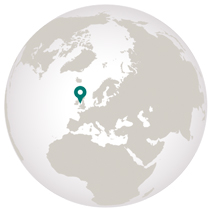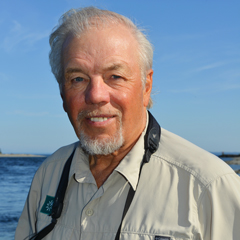British Isles
onboard Silver Endeavour
May 12 – 25, 2025
British Isles Cruise
The British Isles aren’t all manicured gardens and tea. Despite millennia of relentless cultivation, it retains a wild side: rocky islets covered by raucous hordes of seabirds; steep islands long abandoned by intrepid ancient settlers; isolated archipelagos upon which people still live, their culture a vivid mix of British, Gaeli,c and Celtic influences. Explore the southerly Scilly archipelago off the Cornwall coast, the striking Skellig Islands, located a mere 8 miles off Ireland’s Kerry coast, and far-flung St. Kilda, 110 miles west of mainland Scotland. Tour Iron Age forts and medieval abbeys. See tens of thousands of gannets, Razorbills, fulmars, kittiwakes, puffins and murres nesting on cliffs, and seals and dolphins in the waters below. Join Apex on this 14-day British Isles cruise to explore the wild and untamed coastlines of Great Britain and Ireland.

Destinations
- Travel by Air
- Travel by Road
- Travel by Boat
- Travel by Bullet Train
- Travel by Rail
- Travel by Dog Sled
-
Monday, May 12: Arrive London, England
Arrive at London’s Heathrow Airport and make your way to your airport hotel, located in Terminal 5. This evening, meet your fellow travelers and expedition leaders for a welcome dinner and briefing. Dinner and overnight at Sofitel London Heathrow.
-
Tuesday, May 13: London / Portsmouth / Embark Silver Endeavour
After breakfast, head southwest to the historic port city of Portsmouth, home to England’s, and now Britain’s, navy since the Middle Ages. This afternoon, embark the Silver Endeavour, your home away from home for the next 12 nights. Be out on deck to take in the panoramas as the ship sets sail.
-
Wednesday, May 14: Tresco, Isles of Scilly
The Scilly archipelago lies just 30 miles off Cornwall, but feels radically different than the rest of Britain. Its pace of life is slower, its weather milder, and it retains a stunning wild edge to it. As the ship approaches the 140 granitic islets that comprise Scilly, look out for dolphins, seabirds and even Basking Sharks. Come ashore at Tresco, arguably the most attractive of the islands. Spend time in its exquisite subtropical gardens, boasting over 20,000 exotic plants from all corners of the world and designed meticulously to flower year-round. Tour the Valhalla Museum, a collection of colorful figureheads salvaged from the islands’ many shipwrecks. Peruse the town, with its café-lined streets, before returning to the ship and setting sail toward Ireland.
-
Thursday, May 15: Glengarriff, County Cork, Ireland
This colorful village, perched between West Cork’s dramatic Caha Mountains and glistening Bantry Bay, is the gateway to the rugged Beara Peninsula and Ireland’s Wild Atlantic Way. Sheltered by the warm Gulf Stream that passes through it, Glengarriff manages to boast exotic gardens and a stretch of ancient oak woodlands rarely seen in Ireland today. Spend time ambling through the friendly town. Pop in at a public house for a conversation with the locals. Visit the diminutive Bamboo Park. Weather permitting, you may enjoy a Zodiac cruise or kayak tour around Garinish Island and out into Bantry Bay to look for seals and seabirds.
-
Friday, May 16: Skellig Islands / Dingle, County Kerry
As the sun rises, catch your first glimpse of the rocky and magnificent Skellig Islands, standing just 8 miles off Kerry in southwest Ireland. If they look familiar, it’s because you may have seen them in several of the recent Star Wars movies. But long before George Lucas landed on its dramatic shores, people have been enthralled by the Skelligs. First referenced in 1400 BC, it became home to an order of monks in the 6th century. Seabirds claimed their well-preserved beehive-shaped monastery long ago, but its remains have been deemed a UNESCO World Heritage Site. Today, sail around the Skelligs to see the monastery and a massive Northern Gannet colony, with nearly 30,000 breeding pairs present. Other species include Atlantic Puffins, European Storm Petrels, Northern Fulmars, Manx Shearwaters, Black-legged Kittiwakes, guillemots and Razorbills. The rich waters around the islands are home to Minke and Beaked Whales, dolphins, Gray Seals, and Basking Sharks. This afternoon, come ashore at Dingle Town, on the rugged peninsula of the same name. Opt for a brisk hike in the surrounding mountains, or a kayak trip in Dingle Bay.
-
Saturday, May 17: Inisheer & Inishmore, Aran Islands
Known as “the Islands of Saints and Scholars,” the Aran Islands at the mouth of Galway Bay seem frozen in time, a microcosm of “old Ireland” in their history, culture, and language. This morning, venture onto low-lying Inisheer (Inis Oírr) and drink up its traditional allure. Walk the paths lined with stone walls and green fields. Step into the local pub and be greeted by traditional music and conversational Gaelic coming at you from all corners. Visit the ruins of the Plassey cargo ship, which ran aground here over 60 years ago. This afternoon, visit Inishmore (Inis Mór), the largest island. Over 50 Celtic, Christian, and pre-Christian sites stand on Inishmore alone, the most important of which is perhaps the Iron Age fort of Dún Aonghasa, described as “the most magnificent barbaric monument extant in Europe” by archaeologist George Petrie. Perched precariously on a 300-foot cliff, the fort is one of Ireland’s most sacred sites. Take a walking tour, or opt for a bicycle tour among the labyrinths of limestone and patchwork fields. Conditions permitting, kayaking may also be an option.
-
Sunday, May 18: Killybegs, County Donegal
Nestled on the jagged shores of the Wild Atlantic Way in Donegal, the town of Killybegs is one of Ireland’s best-kept secrets. Overshadowed by Dublin and Galway, Killybegs manages to retain its “quiet fishing village” allure despite being Ireland’s largest commercial fishing port. Today, explore the quaint town, then head out for a drive along the spectacular Slieve League Cliffs. Towering at nearly 2,000 feet above sea level, they are amongst the highest sea cliffs in Europe.
-
Monday, May 19: Londonderry, Northern Ireland
Always a cultural heavyweight, Northern Ireland’s second-largest city experienced a resurgence when it was named UK’s City of Culture in 2013. Nestled behind city walls for 400 years, Londonderry (or Derry, locally) contains a tapestry of history, evidenced by its eclectic architecture, thoughtful museums, and iconic murals that recorded major events of ‘The Troubles’ as they happened. Walk the city walls today, the same walls breached during 1688’s Siege of Derry, when King James’ forces attacked, causing mass starvation. See the towering St. Columb’s Cathedral, containing Ireland’s oldest peal of bells. The Tower Museum provides a measured look back through Derry’s storied past. You may opt to drive through Derry City via bus, then out to the seaside resort town of Portrush on the Antrim Coast. Visit the UNESCO World Heritage Site of Giant’s Causeway, three miles of hexagonal basalt columns of varying heights that descend like a staircase into the sea. Stop at nearby Dunluce, arguably the most dramatically situated castle in Ireland.
-
Tuesday, May 20: Iona & Lunga, Inner Hebrides, Scotland
Wake up due north of Antrim, in Scottish seas. Come ashore on the small and sacred Inner Hebridean island of Iona. Visit Iona Abbey, built in 563AD by Christian missionary St. Columba to spread Christianity throughout Scotland. Despite numerous Viking attacks, it was always rebuilt, and its 12th-century incarnation is here to this day. The adjacent St. Oran’s graveyard is said to be the resting place of numerous medieval kings, including Macbeth. This afternoon, visit Lunga, the largest island in the incredibly remote Treshnish archipelago. Lunga was populated until the 19th century, and vestiges of black houses remain everywhere. Now, it’s mainly home to Atlantic Puffins and shags. Take a Zodiac cruise along Lunga’s shores to see them. Land on its rocky shore and climb over rocks to get a closer look. Kayakers can also explore the waters around the island.
-
Wednesday, May 21: Inverie, Scotland
Accessible only by boat or a 20-mile hike over the mountains, the Knoydart Peninsula is the Scottish Highlands at its wildest. Inverie, home to 120 intrepid denizens, is its only town, a quaint collection of whitewashed buildings on the shores of Loch Nevis, and home to The Old Forge, Britain’s most remote pub. Today, hike the hills around Inverie or kayak around the coastline of Loch Nevis to enjoy the stunning backdrop of mountains and woodlands.
-
Thursday, May 22: St. Kilda & Boreray, Outer Hebrides
St. Kilda is the most isolated island archipelago in the rugged Outer Hebrides. These storm-ravaged islands were continuously inhabited for at least two millennia by people of extraordinary hardiness. But as the modern world closed in after World War I, the remaining inhabitants chose to leave. This morning, hike around the remains of their rough stone buildings and distinctive storehouses called cleitean. Keep your eyes peeled for the extremely rare St. Kilda Wren, as well as an early type of sheep, the Soay. Depending on conditions, you may take a Zodiac cruise to see the UK’s largest colony of Atlantic Puffins, as well as murres, fulmars and kittiwakes. This afternoon, cruise around Boreray, also in the St. Kilda group. See the rare—and now wild—Boreray Sheep, as well as one of the world’s largest colonies of Northern Gannets.
-
Friday, May 23: Shiant Islands, Outer Hebrides
Closer to the mainland in miles if not civilization, the Shiants are another uninhabited island group in the Outer Hebrides. Dolerite columns, taller than those found at Giant’s Causeway, jut from the ocean on the north side of Garbh Eilean, the Shiants’ main island. Zodiac cruise around the island and study the cliffs’ crags and furrows to look for Atlantic Puffins (less numerous than in St. Kilda, but more densely congregated), as well as significant numbers of guillemots, Razorbills, fulmars, kittiwakes, shags, and skuas. The waters around the islands are also home to a great variety of sea life, including Gray and Harbor Seals, Fin Whales, Orcas, dolphins, and Basking Sharks. The Shiants were also the last bastion of the Black Rat in Britain, until a massive eradication program finally eliminated them in 2016, giving the seabird colonies well-earned peace.
-
Saturday, May 24: Isle of May
The Isle of May is located just 5 miles off mainland Scotland, at the mouth of the Firth of Forth. This tiny island (1 mile by 1/3-mile) is used by biologists to survey migrating passerines and tag breeding seabirds. Indeed, it is home to roughly a quarter of a million of them, including tens of thousands of puffins. Hike here to look for puffin burrows, as well as guillemots, Razorbills, shags, cormorants, Eider Ducks and terns. Enjoy a farewell dinner on the ship with your expedition leaders and fellow travelers.
-
Sunday, May 25: Disembark Leith / Edinburgh and Depart
After breakfast, disembark in Leith and transfer to the airport in Edinburgh for your international flights home.
Details
- May 12 – 25, 2025
- Leaders Peter Harrison, Shirley Metz, Ingrid Nixon & Dan Olsen
- Rates starting from $13,550 per person Rate details

British Isles, 2025
onboard Silver EndeavourSuite Categories Per Person Rates Classic Veranda Suite $13,550 Superior Veranda Suite $14,850 Deluxe Veranda Suite $15,450 Premium Veranda Suite $15,850 Silver Suite $21,050 Signature Suite $30,050 Master Suite $34,150 Grand Suite $39,050 Owner's Suite $51,750 Solo – Classic Veranda $19,870 Solo – Superior Veranda $21,820 Solo – Deluxe Veranda $22,720 Solo – Premium Veranda $23,320 - 14 days Trip Length
- 207 guests onboard Silver Endeavour
- London Start
- Edinburgh End
Call us to reserve your spot on this exciting expedition!










